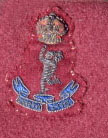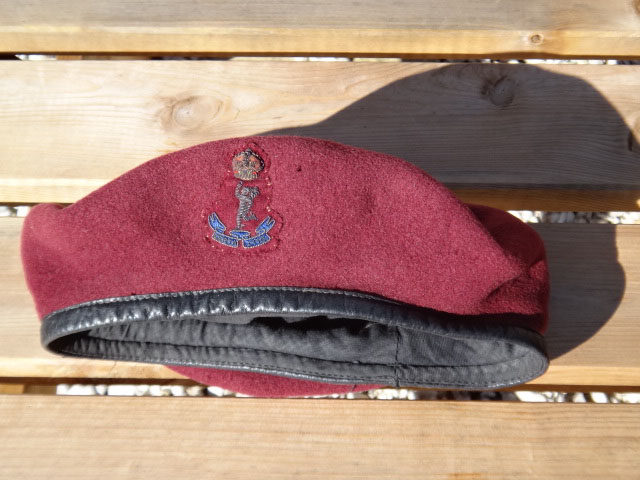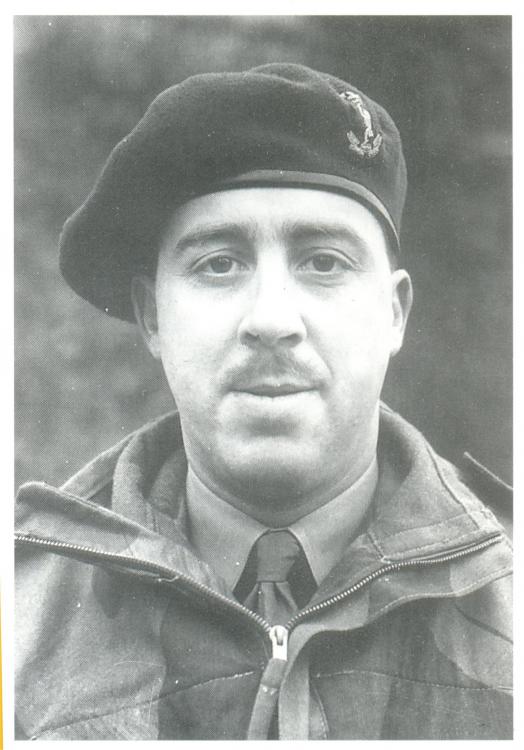
ROYAL CORPS OF SIGNALS.
1st AIRBORNE DIVISION SIGNALS
OFFICERS BULLION BERET BADGE
1942 - 1955

The 1st Airborne Division was formed on the 1st November 1941 at the express instruction of Prime Minister Winston S. Churchill who wanted a force of airborne troops. To this end Lt. Gen. Fredrick "Boy" Browning was appointed Commander Paratroops & Airborne Troops.
The distinctive maroon beret now more commonly called the "Red Beret" by most countries airborne forces, was officially introduced in 1942, at the direction of Lt. Gen. Browning commander of the British 1st Airborne Division. Along with Sir Alan Brooke CIGS and an orderly who paraded in several different coloured berets. Unable to make up his mind the orderly was asked for his opinion. The orderly replied "Well sir I like the red beret best" This settled the matter and the red was chosen. A maroon coloured beret was introduced for wear by Airborne Forces on 29th July 1942 under ACI 1596. The maroon beret was first worn in action in North Africa during November 1942.
Illustrated above is a photograph from the Royal Signals Museum, Blandford, of an Officer's Bullion Beret badge on a maroon backing. (Some Airborne Signals Officers I am advised but can not prove, wore the badge with a dark blue backing). This was the first unofficial beret badge that depicted "Jimmy" with no circlet or the wording Royal Corps of Signals and no globe for "Jimmy" to stand on at the bottom. Other ranks of the Airborne Division Signals at the time wore the conventional Royal Signals metal badge on a maroon beret.
Below, along with the beret photograph from the Royal Signals Museum can also be seen a photograph of Lt. Col. Tom Stephenson OBE. commanding officer 1st Airborne Division Signals wearing the beret and badge taken in 1944.

